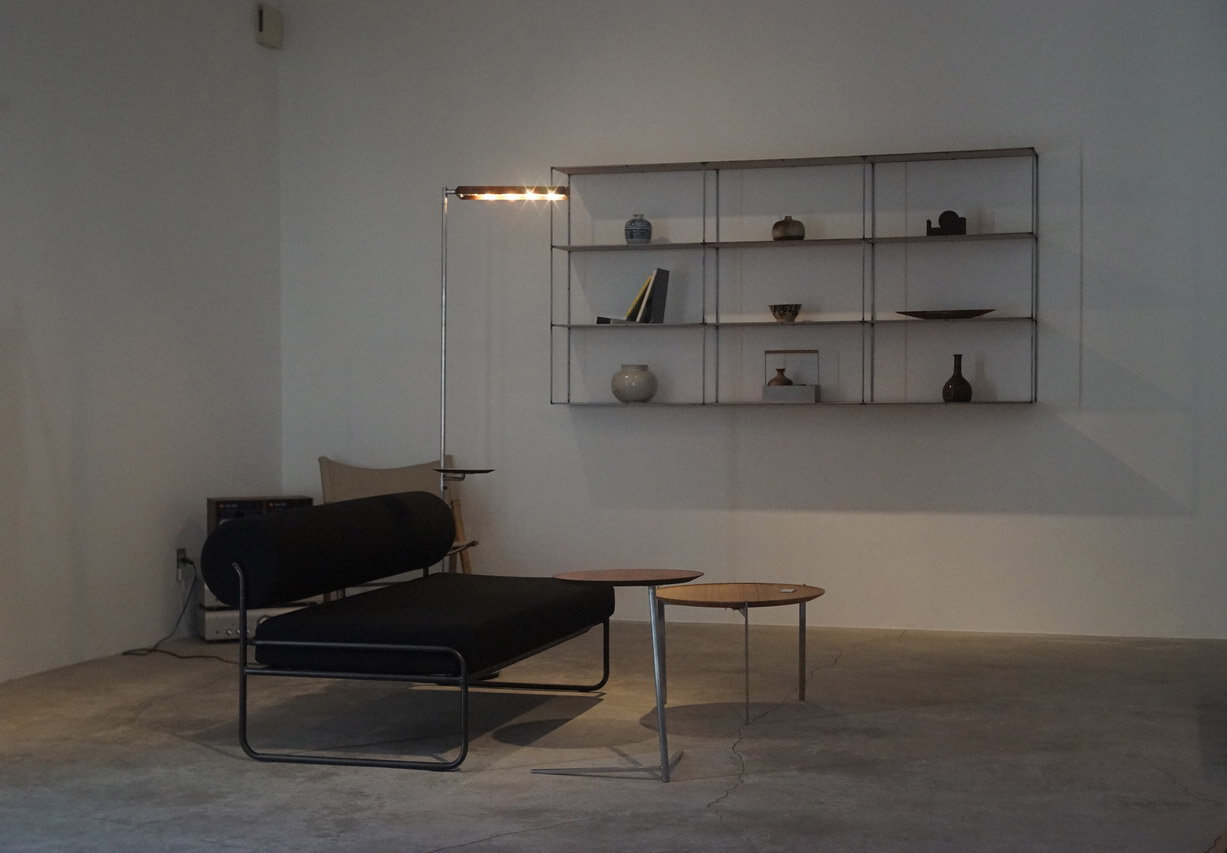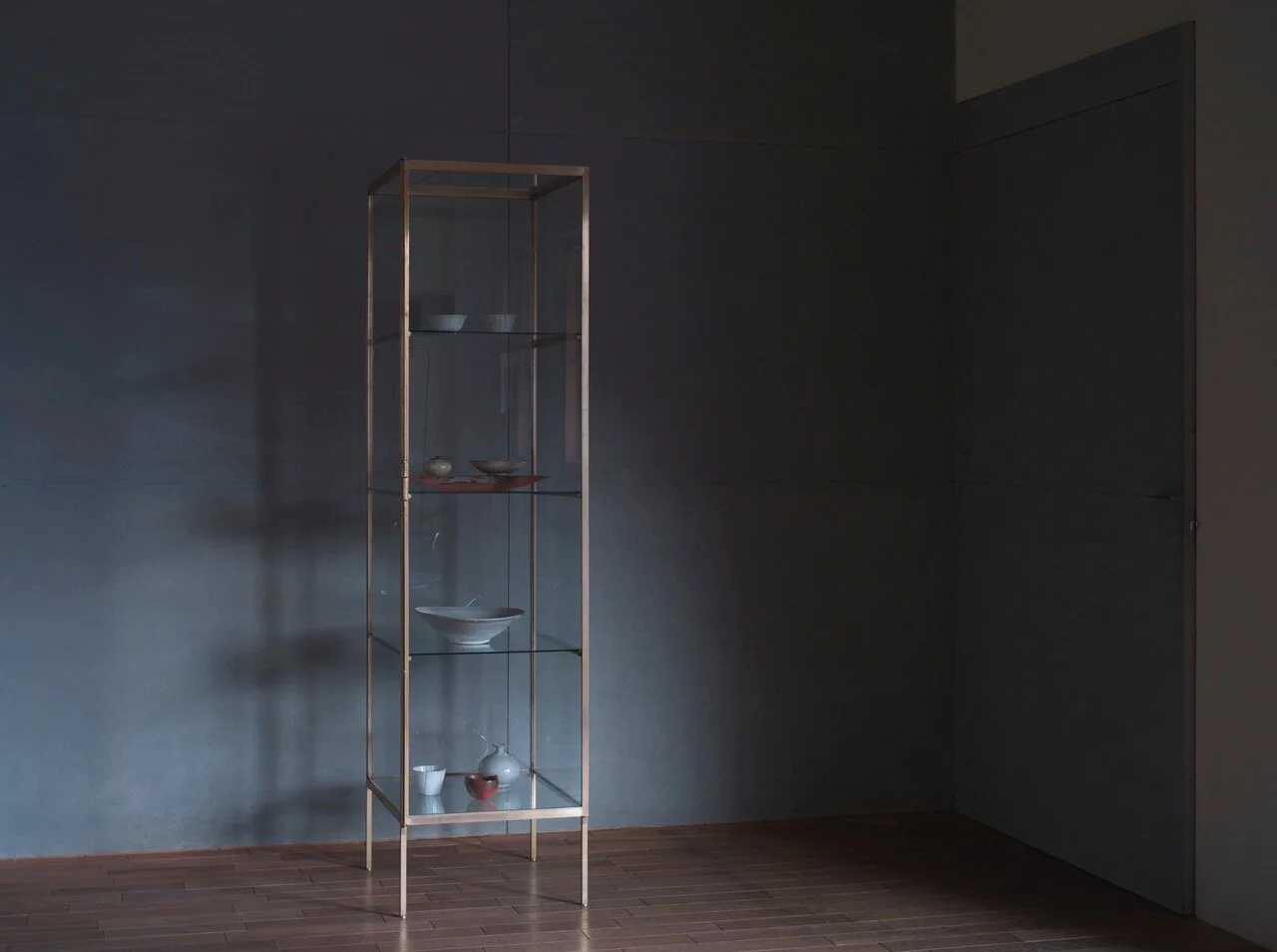Interview with TAKASHI KITA/KITA WORKS —part 2
2/2
I'm not satisfied unless the details are the way I want them to be, so we process everything in our factory
— Takashi Kita / KITA WORKS
photography : KITA WORKS
words : Reiji Yamakura/IDREIT
continue from part 1
— Could you tell me about the High Chair next?
There was a request to make high chairs for a counter table for a cafe restaurant. Developing a new chair is difficult when compared to tables and cabinets, and it takes time to do that, but I enjoy the whole creation process, so I’ve made lots of chairs so far.
The seat and backrest of the High Chair are designed with two pieces joined together with metal parts.
This High Chair was developed for the local cafe restaurant.
— Do you process all the wood materials you use for furniture at the factory of your own business?
Yes, since I’m not that good at communicating with others about creation and the details. Also, I''m not satisfied unless the details are the way I want them to be, so we process everything in our own factory while repeatedly going through trials and errors.
I made this highchair by combining the back and the seat of the chair that were made from press-molded, laminated plywood. If it’s a large furniture factory, maybe they can create both back and seat of a chair as one whole part, but since our factory doesn’t have any facility to do that, I had to use 2 parts, bend them into a curve, and then connected them together. It’s the design that was created under the restricted conditions, but I think the metal parts are the good accenting parts of the design. Also, the design of the triangular footrest was designed by incorporating the elements of the legs and the seat of the chair.
Kida has created a series of shelves made of thin steel rods welded together.
— Another question I want to ask you, is about this minimalist-style slim Wall Shelf. What’s the diameter of this frame in mm?
It’s a frame that’s made from a square steel bars of 6mm width.
— Only 6MM?!
Yes. I came up with the design of this shelf for the use at my showroom. I designed it so it would match with the 1900 x 800mm standard size of the plywood that’s used for the wall material.
Wall Shelf with a 6mm thin steel square bar. Kita said he designed it to fit the plywood size 1900mm x 900mm installed for the wall in his showroom.
— Would 6mm be enough in terms of strength?
If it’s for a free standing shelf, then using 6mm won’t be practical because the shelf will be unstable, but since this shelf will be fixed onto the wall with screws, it won’t be an issue.By making it as thin as possible to the very limit, it will look nice because the shelf won’t stand out too much.
— I see. There are many designers who prefer thinner materials, but I’d never seen anything that’s as thin as this one. Manufacturers would probably make it a bit thicker for practicality and safety reasons, but since you can make everything on your own, you can aim for the very limit as much as you like, I think.
That is true. I always have a clear picture of what I want the parts to be, as thin as they are, before I start making them. If that doesn’t work then just repeat the process until I get the right thinness. So I don’t feel stressed about going through multiple trials and errors.
This design requires effort, but it doesn’t involve anything that are technically difficult. I use 2 types of materials; glass and wood, for the shelf boards. I always get a great support from a highly skilled glass craftsman for making this wall shelf and the brass cabinet.
— Finally, could you tell me about what you value when creating furniture?
What I had been emphasising on since the time I established KITA WORKS were to not make anything thicker than minimum required, strength-wise, and to not attach any parts that are not needed. The concept of “Mottainai ( = don’t be wasteful!) ” from Japan, and the Scandinavian furniture designs probably affected me to think like that. Also, there is this dictum, “LESS IS MORE” by Mies van der Rohe that I sympathise with, and this phrase stays in my mind at all times.
Chair No.9 was designed with the idea of bending a single long pipe. The pipe runs from the end of the backrest to the handle and leg in a single stroke.
The 3 Leg Chair was created not with a minimalist design approach, but with the challenge of adding new elements. Based on the same concept, 4 legs type is also available.
On top of that, I’ve been trying not just to keep everything at minimal for the past 2, 3 years, but also to find a way to design something by adding one different element to it. For example, the design of the 'Chair No.9' got the inspiration from the way an armchair was manufactured by bending one cylindrical pipe. Another example is the '3 Legs Chair', where I tried to find the best balance by combining this overly-thick seat and slim legs. I try to come up with designs that are not specific to the purposes.
The folding chair is currently undergoing improvement.
— The method of creating a design by using just one piece of material is something that’s surely resulted from the manufacturing processes at a studio. Finally, could you share with me about what you are creating right now, or about something that you are interested in right now?
Not a new item, but I’d like to evolve items from my exhibition, and create an open shelf using brass. I am also currently working on improving the folding chair I designed 7 years ago.
And since I can process steel and wood at my own factory, if I can ever find a partner who is specialised in processing textiles or leathers, then I believe I can express something new by working on upholstery fabric of the chair.
Custom-made steel cabinet for LOG. Kita collaborated with Indian architect Studio Mumbai for the project.
KITA WORKS's furniture that are created based on the firm technique of processing and welding steel. As we can see from him looking back on his past work with Studio Mumbai from India; “Initially, I found it difficult to communicate with them, but since we had some common ground, like how we both found beauty in the same details, or how we both felt some oddness towards the same parts, we were able to share each other’s images and ideas through our works.”, there are values in Kita’s products that can be felt across borders.
In Okayama, where he is based, there is a culture of mutual support among the workshops and design studios. The craft-friendly culture and their steady manufacturing approach where they carry out methods until they are fully satisfied with the final product, are what is cultivating their originality.
TAKASHI KITA
Founder of KITA WORKS. Born in 1978. Started working for Kita Welding Factory in 2000. Established his own furniture studio KITA WORKS based in the welding factory in 2007 and working on custom made furniture and fixtures.






















